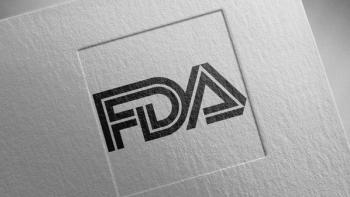
New Diabetes Drugs May Also Improve Kidney Health
The renal protective effects seen with the SGLT2 inhibitor canogliflizin may be independent of glycemic control, suggest authors of a new post-hoc analysis.
SGLT2 inhibitors shown to slow declines in renal function
A new class of diabetes drugs can protect kidney health in addition to lowering blood sugar levels, study results suggest.
The findings, published August 18 in the
"Since glycemic control is only modestly different between canagliflozin and glimepiride, our results suggest that potential kidney protective effects of canagliflozin may be unrelated to glycemic control," the lead study author,
The study was a secondary analysis of a clinical trial in 1,450 patients with type 2 diabetes who received metformin and were randomly assigned to daily canagliflozin at 100 mg (483 patients), canagliflozin at 300 mg (485 patients), or glimepiride uptitrated to 6-8 mg (482 patients). At baseline, a total of 230 patients (15.9%) had a urinary albumin-to-creatinine ratio (UACR) that was at least 30 mg/g.
Type 2 diabetics are at higher-than-normal probability of presenting with hyperglycemia, hypertension, and excess weight and, in turn, of developing increased albuminuria.
Estimated glomerular filtration rate (eGFR) declined by 3.3 ml/min per 1.73 m2 per year (95% CI 2.8-3.8) in the glimepiride group, 0.5 ml/min per 1.73 m2 per year (95% CI 0.0-1.0) in the canagliflozin 100 mg group, and 0.9 ml/min per 1.73 m2 per year (95% CI 0.4-1.4) in the canagliflozin 300 mg group.
In the overall population, the 30% eGFR decline endpoint was observed in 46 patients (9.7%) in the glimepiride group, 32 (6.7%) in the canagliflozin 100 mg group (hazard ratio, 0.66; 95% CI 0.42-1.04), and 43 (9.0%) patients in the canagliflozin 300 mg group (hazard ratio, 0.93; 95% CI 0.62-1.42).
In the subgroup of patients with UACR at or above 30 mg/g, hazard ratios for the 30% eGFR decline endpoint were 0.37 (95 CI, 0.15-0.90) and 0.69 (95% CI, 0.33-1.45) for the canagliflozin 100 mg and 300 mg groups, respectively, compared with glimepiride.
"The main efficacy endpoint for this post hoc analysis was the yearly rate of eGFR decline over the 104 weeks of follow-up," Heerspink and colleagues wrote. "Current practice guidelines recommend targeting [diabetes] risk factors with a range of different drugs. However, despite the many drugs used, many patients do not reach treatment targets and develop potentially preventable micro- and macrovascular complications."
Results from another study, published last year in the
"Of the new diabetes drug classes, the SGLT2 inhibitors are of particular interest to the nephrology community," wrote
Reviewed by F. Perry Wilson, MD, MSCE Assistant Professor, Section of Nephrology, Yale School of Medicine
Primary Source: Journal of the American Society Nephrology
Heerspink Hiddo, et al.
Secondary Source: Journal of the American Society Nephrology
De Boer I, et al.
This article was first published on
Disclosures:
Heerspink and coauthors, three of whom are full-time employees of Janssen Research & Development, reported various financial relationships with AbbVie, Amgen, Astellas, AstraZeneca, Baxter, Bayer, Bristol-Myers Squibb, Boehringer Ingelheim, CSL, Eli Lilly, Gambro, GlaxoSmithKline, Janssen, Merck, Roche, and Z.S. Pharma.
The editorialists reported relationships with several pharmaceutical and device firms including AbbVie, Medtronic, Amgen, Bayer, Boehringer Ingelheim, Ironwood, Janssen, Lilly, AstraZeneca, Novo Nordisk, Merck, and others.
Newsletter
Enhance your clinical practice with the Patient Care newsletter, offering the latest evidence-based guidelines, diagnostic insights, and treatment strategies for primary care physicians.




















































































































































































































































































